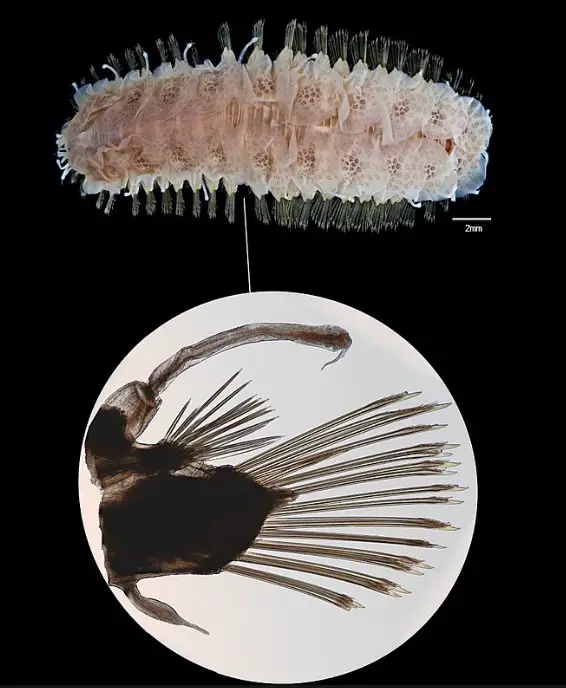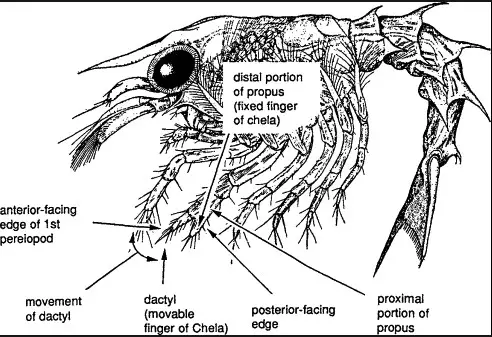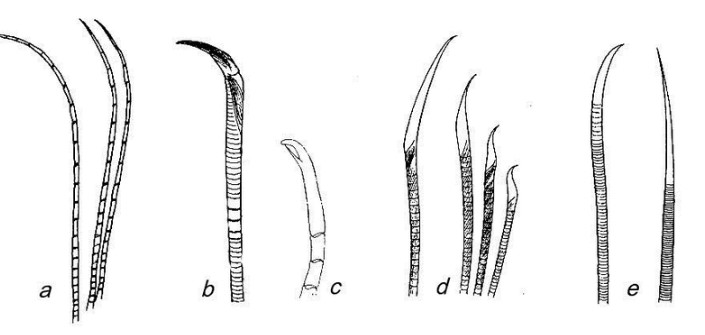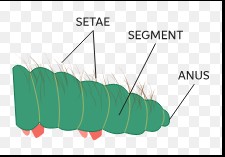The distinction between setae and chaetae is a nuanced yet critical aspect of biological taxonomy that often goes unnoticed outside specialized scientific communities. These structures, although seemingly similar at a glance, play unique roles in the anatomy and survival strategies of various organisms. Their presence and characteristics offer insight into the evolutionary adaptations of different species across the animal kingdom.
Setae and chaetae are types of bristle-like structures found on the bodies of certain animals, but they serve different purposes. Setae, commonly found on insects and mammals, are often involved in sensory functions, aiding in the perception of the environment. Chaetae, on the other hand, are stiff bristles seen in annelids like earthworms and play crucial roles in locomotion and interaction with the environment.
Exploring these structures reveals the complexity of nature’s designs and the intricate ways organisms adapt to their habitats. Setae and chaetae exemplify how even the smallest components of an animal’s body can have significant ecological and evolutionary implications. Understanding their differences not only enriches our knowledge of biology but also highlights the diversity of life forms on our planet.

Setae Explained
Definition and Characteristics
Setae are small, hair-like structures found on the bodies of various animals, including insects and mammals. These structures can vary greatly in terms of size, shape, and function. Typically, setae are flexible and serve a range of purposes, from sensory roles to providing traction during movement.
Role in Animal Anatomy
Setae play critical roles in animal anatomy and behavior. Their primary functions include:
- Sensory perception: Many setae are sensitive to touch, vibration, or chemical signals, helping animals navigate their environments.
- Adhesion: Some species use setae to cling to surfaces, aiding in climbing or securing themselves in place.
- Thermoregulation: In certain mammals, setae adjust to changes in temperature, helping with heat retention or cooling.
Examples in Nature
- Insects: The setae on a fly’s feet allow it to walk on smooth surfaces, including ceilings.
- Mammals: Otters have dense setae that trap air for insulation in cold waters.
- Spiders: Setae on spiders’ legs help them sense web vibrations, indicating the presence of prey or threats.
Chaetae Explained
Definition and Distinguishing Features
Chaetae are bristle-like structures found on annelids, such as earthworms and polychaetes. Unlike setae, chaetae are often stiffer and more rigid, playing a crucial role in movement and interaction with the environment. These structures are typically made of chitin, a durable material that provides strength and resistance.
Biological Significance
Chaetae contribute significantly to the biology of annelids, facilitating:
- Locomotion: They help in anchoring the worm to soil or substrates, allowing for effective movement.
- Defense: Some chaetae are sharp and can be used as defensive tools against predators.
- Sensory functions: Though not as common, some chaetae also serve sensory purposes, detecting changes in the environment.
Examples Among Species
- Earthworms: Use chaetae for burrowing and moving through soil.
- Polychaetes: Have chaetae that vary in form and function, from locomotion to defense mechanisms.
Comparative Analysis
Physical Attributes
Shape and Structure
- Setae are generally more flexible and can be fine or feathery, adapting to a wide range of functions.
- Chaetae, in contrast, are stiffer and straighter, designed primarily for physical support and movement.
Material Composition
- Setae are composed of various materials, including keratin in mammals and chitin in insects.
- Chaetae are predominantly made of chitin, providing strength and durability for the tasks they perform.
Functional Roles
In Locomotion
- Setae contribute to locomotion in creatures like insects and spiders through adhesion and traction.
- Chaetae are essential in the burrowing and movement of annelids by providing grip and leverage against the substrate.
In Sensory Mechanisms
- Setae are crucial in the sensory systems of animals, detecting environmental cues and changes.
- Chaetae, while primarily for locomotion, can also have sensory capabilities in certain species.
Ecological Impact
Contribution to Habitat
- Setae help animals adapt to their environments, from climbing trees to navigating water surfaces.
- Chaetae enable annelids to aerate and enrich the soil, promoting plant growth and health.
Interaction with Environment
- Setae facilitate interactions with the environment in ways that promote survival and reproduction.
- Chaetae‘s role in movement and soil interaction has a direct impact on ecosystem dynamics, affecting everything from soil composition to the distribution of plant life.

Evolutionary Perspective
Evolutionary Origins
The evolutionary origins of setae and chaetae trace back to the early days of animal life on Earth. These structures represent adaptations to environmental challenges and survival needs. Setae in insects and mammals and chaetae in annelids evolved independently, a classic example of convergent evolution, where similar traits arise separately to solve similar problems.
Adaptations Over Time
Over millions of years, setae and chaetae have adapted to the changing needs of their bearers. Insects developed setae that allowed them to sense their environment more effectively, aiding in finding food, avoiding predators, and navigating their surroundings. Similarly, annelids’ chaetae became stronger and more versatile, enabling these creatures to burrow more efficiently and anchor themselves in flowing water or soil.
The diversification of these structures across species highlights the evolutionary plasticity and innovation of nature. Setae and chaetae evolved to perform a wide range of functions, from simple mechanical tasks to complex sensory roles, reflecting the adaptability and resilience of life.
Significance in Research
Studies on Setae and Chaetae
Research on setae and chaetae has unveiled much about the biology and ecology of species that possess them. Studies have explored how these structures affect locomotion, environmental interaction, and survival strategies. For instance, the examination of gecko setae has led to a better understanding of adhesion mechanisms, which are inspired by nanoscale physical principles.
Technological Applications
The study of setae and chaetae has also inspired technological innovations. Biomimicry projects have developed materials and surfaces that mimic the adhesive qualities of gecko setae, leading to new types of tapes and grips that can hold significant weight and can be easily removed without leaving residue. Similarly, the structure of chaetae has inspired designs for more efficient digging and anchoring mechanisms in engineering projects.
These applications demonstrate the potential of biological structures to inspire solutions to human challenges, showcasing the importance of studying setae and chaetae not just for academic interest but for their practical implications.
Common Confusions
Similar Terms and Distinctions
The terms setae and chaetae, while often used interchangeably, refer to distinct biological structures with different functions and evolutionary origins. The key difference lies in their presence across different taxonomic groups and their structural and functional diversity. It’s important to distinguish between them to understand the adaptations and capabilities of various organisms.
Clarifying Misconceptions
One common misconception is that all hairy or bristle-like structures on animals are either setae or chaetae. However, these terms have specific definitions and should not be applied to all such structures. For example, the fur on mammals is not considered setae, even though it can serve similar protective and insulatory functions. Understanding these distinctions helps clarify discussions about animal morphology and evolution.
Another misunderstanding is regarding the material composition of these structures. While both setae and chaetae are often made of chitin, the specific properties and chemical makeup can vary significantly, reflecting the diverse roles these structures play in the animal kingdom. Educating about these nuances can enhance our appreciation for the complexity of life and the evolutionary processes that shape it.
The exploration of setae and chaetae, from their evolutionary origins to their technological applications, highlights the intricate relationships between form, function, and evolution. These structures, while small, embody the innovative spirit of nature, providing critical insights into the diversity of life and inspiring advancements in technology and science. As research continues, we can expect to uncover even more about the role of these fascinating structures in the natural world and their potential to influence future technological developments.

Frequently Asked Questions
What are setae used for?
Setae, found on organisms ranging from insects to mammals, serve a variety of purposes including sensory perception, adhesion to surfaces, and even thermoregulation. Their functional versatility is a testament to the evolutionary ingenuity of nature, showcasing adaptations that allow animals to thrive in diverse environments.
How do chaetae assist in locomotion?
Chaetae, primarily found in annelids like earthworms, are essential for movement. These rigid, hair-like structures work against the substrate, enabling these creatures to anchor themselves and propel forward or backward. This mechanical advantage is crucial for burrowing and navigating through soil or aquatic environments.
Can setae and chaetae be found on the same animal?
Typically, setae and chaetae are not found on the same organism due to their distinct evolutionary backgrounds. Setae are characteristic of arthropods and mammals, whereas chaetae are specific to annelids. Their presence is a key feature in classifying and understanding the evolutionary lineage of these animals.
Why is the study of setae and chaetae important?
Studying setae and chaetae sheds light on the evolutionary adaptations and ecological niches of different species. By examining these structures, scientists can gain insights into the survival strategies, habitat preferences, and even the phylogenetic relationships of organisms, contributing to our overall understanding of biodiversity and life on Earth.
Conclusion
The exploration of setae and chaetae illustrates the intricate details of nature that often go unnoticed but play significant roles in the survival and evolution of species. These structures not only offer fascinating insights into the adaptability and diversity of life forms but also underscore the complexity of biological classification and evolutionary history.
Understanding the differences between setae and chaetae enriches our appreciation for the subtle yet profound ways in which life has diversified on our planet. It serves as a reminder of the endless curiosity and discovery that awaits in the study of biology, inviting us to look closer and appreciate the minutiae of the natural world around us.

